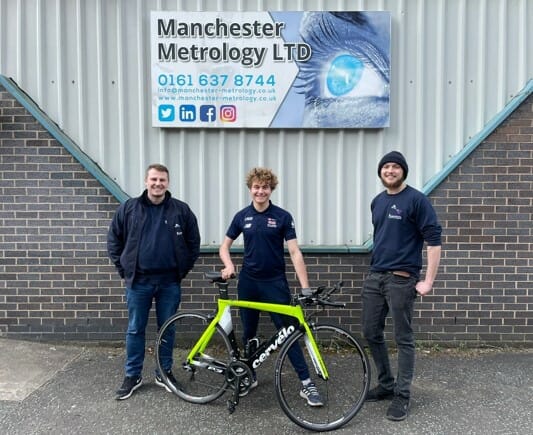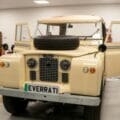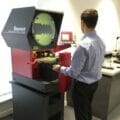Who is Matthew Robertson?
Kent’s Robertson, who has cerebral palsy, initially struggled with cycling in his younger years, mastering the art as a 13-year-old.
After graduating through the Great Britain Cycling Team’s development programme, Robertson made his world-level debut at the 2019 track world championships in Apeldoorn. There, he performed admirably, finishing fifth in the kilo and 12th in the individual pursuit in an event which also saw him break the C2 flying 200m world record. He has continued this progress on the track since and set new personal best times in both the kilo and individual pursuit at the 2019 UCI Manchester Para-cycling International.
With Robertson determined to continue on his cycling journey, Manchester Metrology were approached in order to perform various scans to enable the engineering of a support piece that would provide more comfort for Matthew Robertson as well as increasing his safety.
The Situation
Effectively, Matthew Robertson had discovered a preferred riding position in which his right side is most secure, stable and comfortable whilst riding. Robertson was looking to capture data of the preferred position to build a custom support that could fix his arm into place – at present this is effectively a support pad at the top of his forearm, one by his wrist and a grip for his hand. As a whole this wasn’t very practical, and Robertson wanted to design something far more advanced to then potentially have this manufactured from carbon fibre. As a result, this should then maximise the comfort of his position as well as keep him safe and stable.
The Manchester Metrology Solution

Using a Hexagon AS1 scanner on a Hexagon Absolute Arm 85 and a Peel 2 scanner, Charlie Ward, scanning engineer at Manchester Metrology, was able to take a scan of Matt’s bike in position. This gave a basic reference to potentially align back to when combining scan data in the future. Matthew Robertson then assumed his riding position, and Charlie Ward then proceeded to take two scans of Robertson’s arm from the shoulder down, with some of the bike included again. Furthermore, Charlie Ward then began processing the data which, due to the high specification of equipment and software used, it took just a matter of days. This process mainly included gaining a good alignment of the data (which is trickier on a flexible/non-rigid scan object), followed by then cleaning up the mesh to make it smooth and remove any errors or overlapping data.
Robertson’s hard work and hunger for success is truly inspiring. Charlie Ward, scanning engineer at Manchester Metrology stated, “It was a pleasure to work with Matthew Robertson!”
The Absolute Scanner AS1 is the pinnacle of 3D scanner technology for portable measuring arms and laser trackers. It constitutes the ultimate all-round portable measurement solution for components of any size. The future of 3D scanning is AS1. Compatible with the AS1 is the 85 Series arms the 85 Series arms are the perfect balance between value for money and accurate measurement, providing the accuracy needed for a wide range of applications.
Additionally, the Peel 2 Scanner is a professional-grade handheld 3D scanner in its purest form. It simply lets you make high-quality 3D scans of small or large objects whilst keeping any project on a budget. The Peel 2 Scanner can scan most items directly without any preparation as it recognizes the shape of objects automatically.








